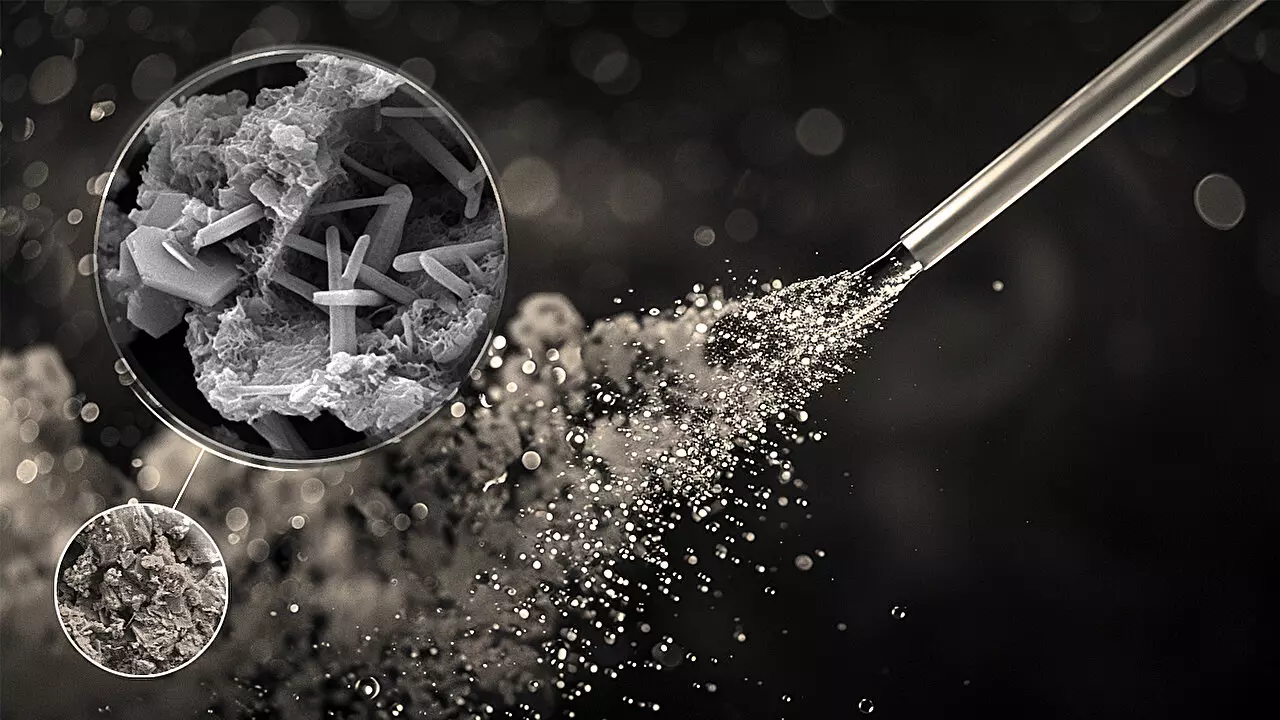A groundbreaking discovery from researchers at Northwestern University has the potential to redefine the construction industry’s relationship with carbon emissions. By employing a carbonated water additive during the manufacturing of concrete, this innovative technique can sequester significant amounts of carbon dioxide (CO2), thus offering a creative solution to one of the highest contributors to global greenhouse gases. The researchers have uncovered a method that not only absorbs CO2 but also enhances the strength and durability of the resulting concrete—an essential material that shapes our infrastructures and lives.
The study highlights a game-changing efficiency in CO2 sequestration, revealing that as much as 45% of the injected carbon dioxide can be captured during the concrete production process. Given that cement and concrete collectively account for 8% of global greenhouse gas emissions, the implications are profound. Alessandro Rotta Loria, a civil and environmental engineering professor at Northwestern, encapsulates the ambition behind their research: to transform cement and concrete into powerful carbon sinks capable of mitigating climate change.
Understanding the Carbonation Process
To appreciate the innovation, it’s essential to understand the mechanics of traditional concrete carbonation versus the new approach. Previously, researchers explored various methods to incorporate CO2 into concrete, with limited success. These methods fell into two primary categories: hardened concrete carbonation, where solid blocks are treated with CO2, and fresh concrete carbonation, where gas is injected into the wet mixture. Unfortunately, both methods often suffered from low capture efficiencies and weakened the structural integrity of the concrete—barriers that hampered their wider adoption.
The Northwestern team delved deeper into the carbonation process by introducing CO2 in a novel way. Instead of combining CO2 directly with the entire concrete mixture, they began by treating a mixture of water and cement powder with carbonated water. This strategic alteration resulted in a quicker and more effective carbonation process, leading to higher concentrations of calcium carbonate, a valuable mineral that strengthens the concrete.
Uncompromised Strength Meets Environmental Responsibility
The most intriguing aspect of this new methodology lies in its ability to retain the strength of the concrete, a common concern in previous carbonation attempts. The findings of this research indicate that rather than diminishing the structural qualities of the concrete, there is potential for even enhanced durability. This opens the door for concrete utilization in a myriad of applications, including beams, slabs, and foundations, ensuring that the material not only contributes to sustainable construction practices but also meets the rigorous standards required by modern infrastructure.
Rotta Loria’s team has not only provided a fresh approach to CO2 sequestration but has demonstrated the versatility of carbonated concrete across various structural applications. The implications for contractors and builders are substantial—access to a material that upholds conventional standards while fostering a reduced carbon footprint aligns perfectly with the growing demand for sustainable construction practices.
Collaboration: Fueling the Momentum of Sustainable Innovation
The research exemplifies the synergy between academia and industry, as evidenced by the partnership with CEMEX, a global leader in building materials committed to sustainable development. This collaboration is pivotal, demonstrating how interdisciplinary efforts can lead to meaningful advancements in combating climate change.
As the construction industry strives to minimize its environmental impact, the academic insights and practical applications developed through this collaboration could set a new benchmark for future innovations. By transforming a non-negotiable aspect of infrastructure into a tool for climate action, this research not only addresses current environmental crises but also paves the way for resilient, future-focused practices.
The Road Ahead
While the study has unveiled a promising method, it remains vital to continue exploring optimization strategies that could further elevate CO2 uptake and understand the mechanisms that drive the carbonization process. The next steps would involve refining the technology for extensive industrial application, ensuring scalability, and validating performance consistency across diverse environments.
With the evolving climate landscape demanding urgent action, breakthroughs like these shine a hopeful light on sustainable construction. Researchers like Rotta Loria and Zampini illustrate that addressing climate change can go hand-in-hand with conventional practices, encouraging future generations to envision a world where building materials are as effective at fighting climate change as they are at constructing our tangible environments. Moving forward, the goal is clear: to transform the cement and concrete industries into champions of carbon sequestration while maintaining the integrity and reliability that our infrastructure relies upon.


Leave a Reply